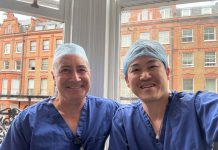I received a letter asking about arthritis (Arthur to his friends), which I have published below as it has some very salient points:
He wrote, “One of the main problems that affect the elderly as you know, is arthritis. Sometimes that includes bone alteration on feet and hands that overgrow painfully.
In the years I noticed a dramatic improvement of new therapies and drugs on many diseases, rarely I read on updated treatment on the above infirmity.
It should be interesting for your readers affected by arthritis to read some comments on the last advanced cure, if any, in your column.”
Thank you for your letter, so let’s get straight into the nitty-gritty. As you get older, you will get to meet ‘Arthur’. Unfortunately, there are many types of arthritis, and descriptions of these go back into antiquity. Perhaps the oldest known type of arthritis, called ‘gout’ or gouty arthritis, has been described since Hippocrates in the 5th century B.C. Then it was known as the “Disease of Kings” due to its association with rich foods and alcohol consumption, something in which the commoners were not able to indulge.
However, today one of the most common forms of arthritis is ‘osteo-arthritis’, and rather than being of a biochemical nature, osteo-arthritis is much more of a mechanical wear and tear situation. And arthritis is very common. In America, the estimated incidence is that 37 million adults are suffering from it.
Unfortunately, we all wear out. Joints in particular are mechanical devices, with one bone sliding on another with a slippery bit (called cartilage) in between as the bearing surface, cum-shock absorber.
Most joints, especially knee joints, are designed to last our three score years and ten, and that’s about it. Medical science has helped us so we now live longer, but we have not worked out how to make the joints last longer!
We do know why they wear out, especially knee joints. Since they are mechanical, increase the loading on the joint and it wears out quicker. Imagine that your knee has been designed to hold up 80 kg for 70 years, and now increase that loading to 120 kg. That same knee now has to support 50 percent more than it was ‘designed’ for, so you can expect it to wear out 50 percent sooner. Simple and painful.
So they hobble down to the doctor and ask for something for the pain. The doctor flips mentally through the latest medical drugs for this condition, and most probably will hand over some Non Steroidal Anti Inflammatory drugs (NSAID’s) and tell the patient to lose weight.
Now I am not saying that this is totally wrong – but – when the NSAID’s first came out (hands up all those who remember Indocid) they were heralded as being the answer to these problems. Some were even supposed to ‘grow’ new cartilage. The answer to a maiden’s prayer, or the osteo-arthritic’s prayers at least.
Unfortunately, we very quickly found that Indocid and its ilk drilled holes in the lining of the stomach and were more than slightly dangerous. So we developed newer and better and more stomach-sparing NSAID’s. Unfortunately, these too produced problems.
Nothing daunted, we came up with even newer and more wonderful NSAID’s, which came with even newer and more wonderful array of side effects. So wonderful that one called Vioxx had to be withdrawn by the manufacturers. Really, we have been chasing our tails here, and not winning.
So what can the poor patient do? The doctor is not offering help, only tablets with abominable (read “abdominal”) side effects. Most patients have already tried paracetamol, hot water bottles, someone else’s great new tablets, NZ green lipped mussels, a cabbage leaf (which does work for mastitis, or so the ladies tell me), various herbal or homoeopathic medications, yoga, meditation, copper bracelets, muttering mantras and goodness knows what else.
So what can the “osteo” sufferer do? Exercise does help to improve the mobility in the knee joint, and by strengthening the muscles and ligaments around the knee, give it more stability. But it will not re-grow cartilage.
There is another avenue in the treatment, and that is direct injections into the affected joints. This produces spectacular results, which unfortunately are very short lived. Back to square one.
This is such an interesting subject, I will continue with Part 2 next week.




